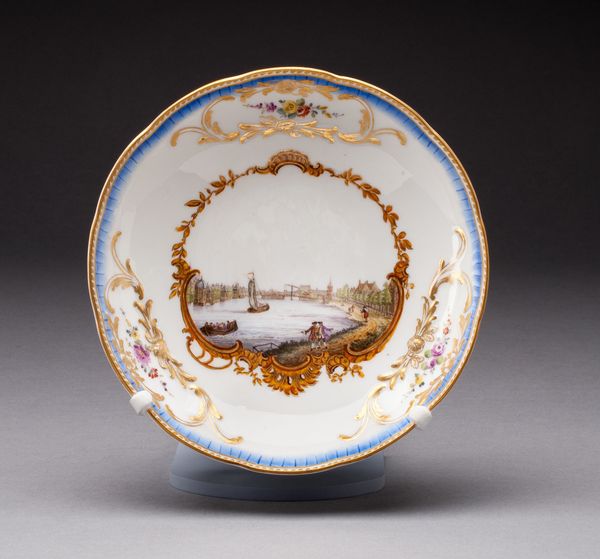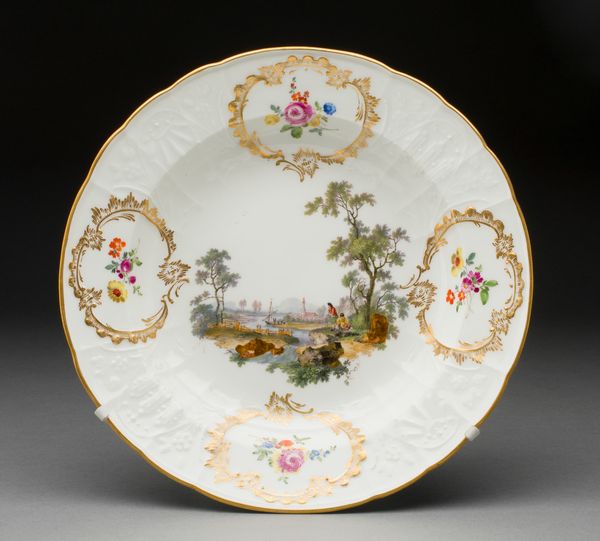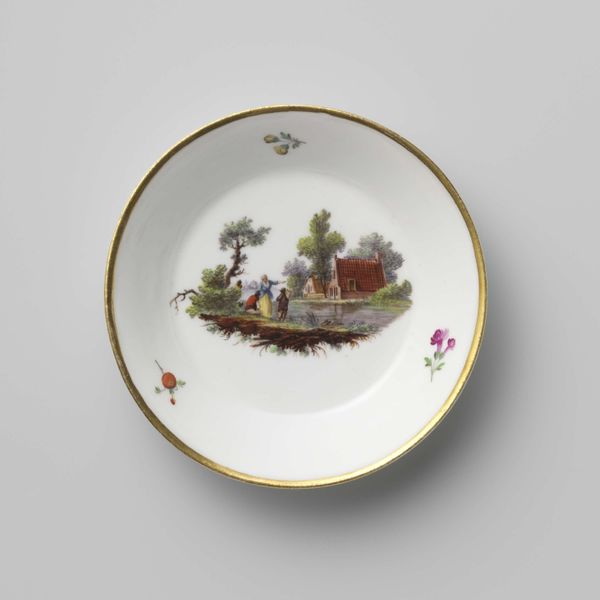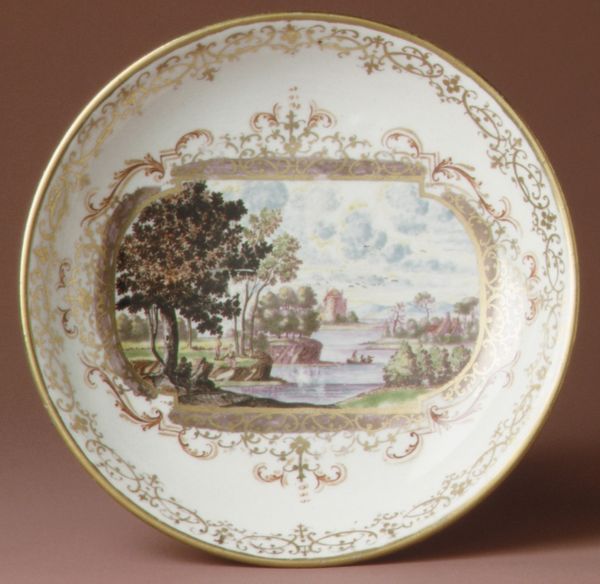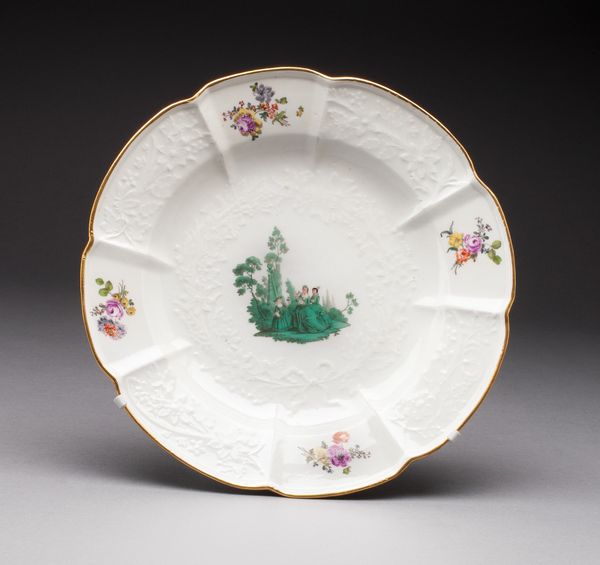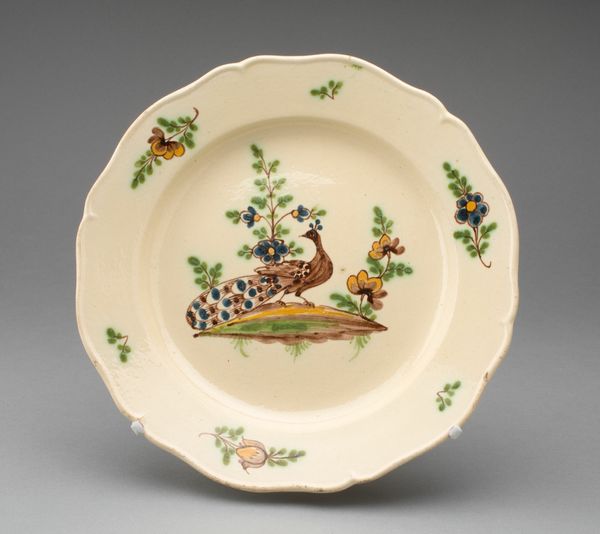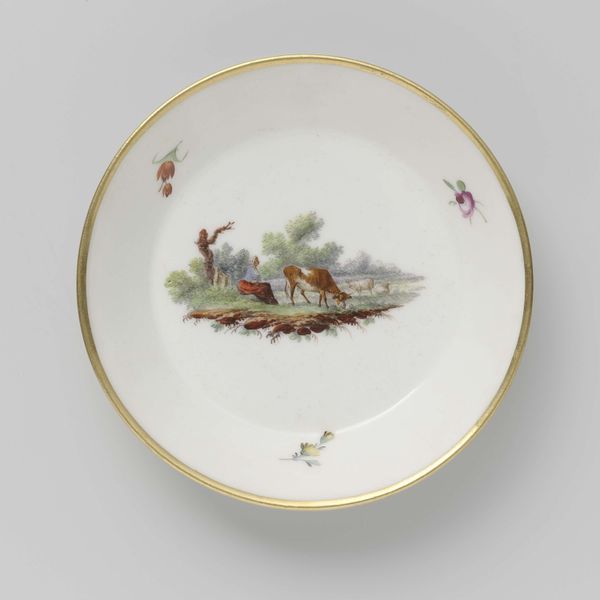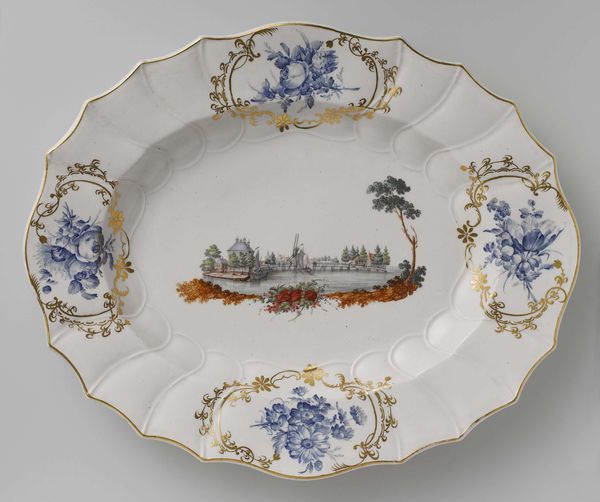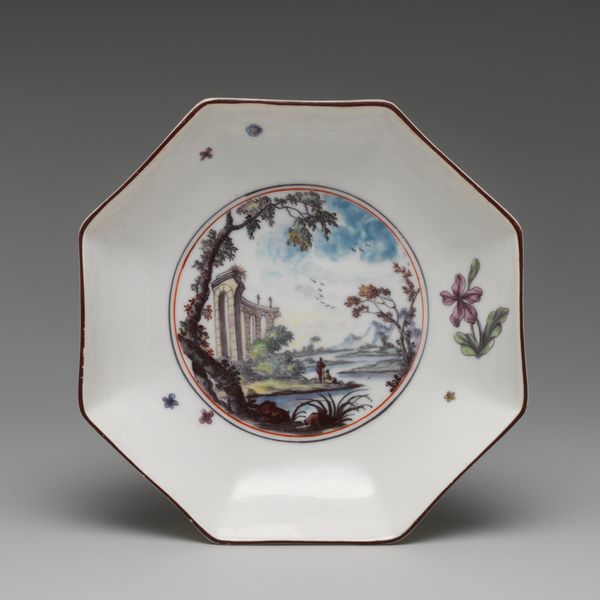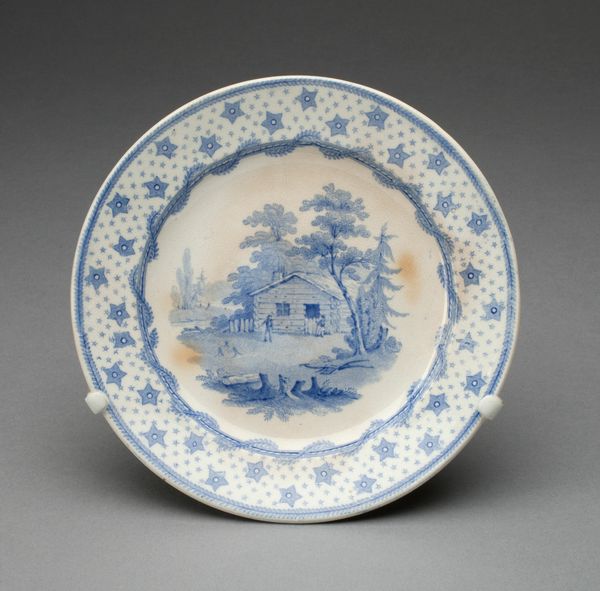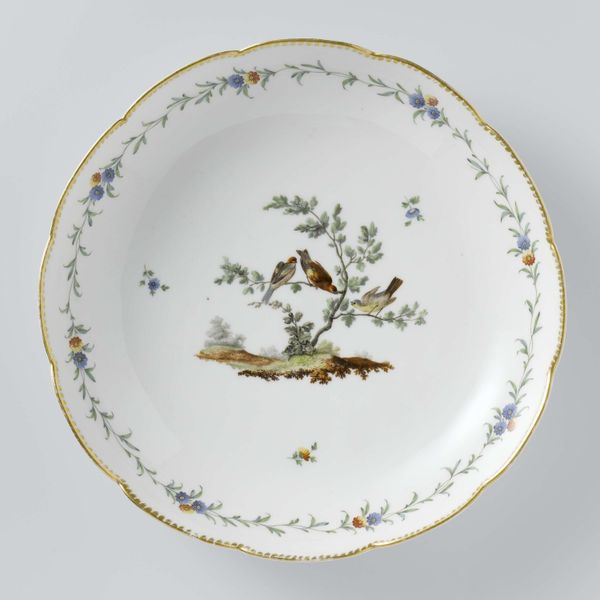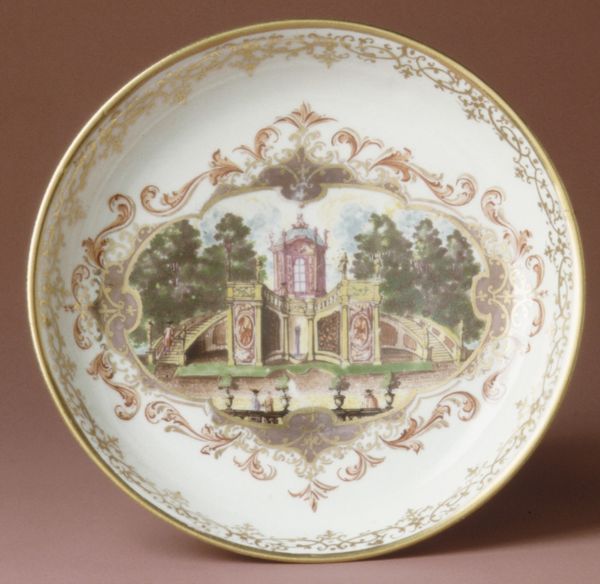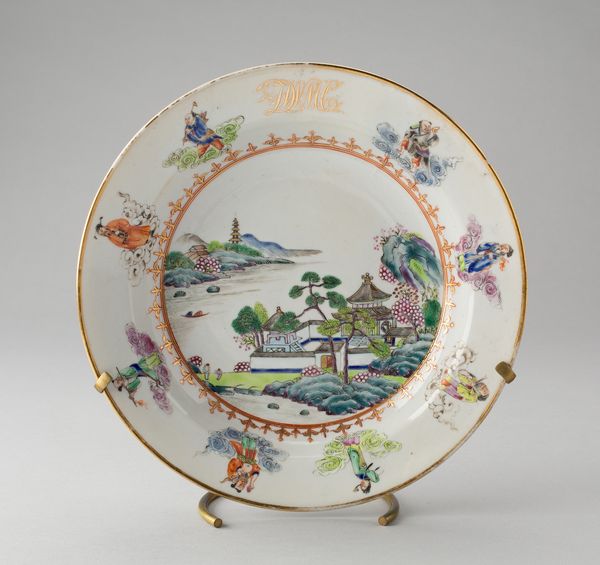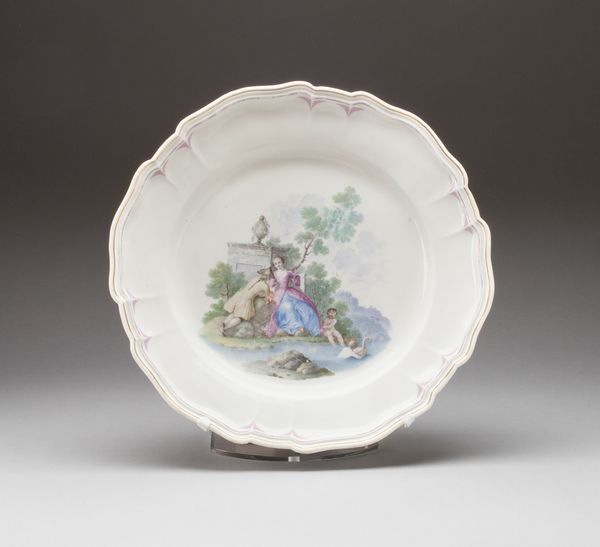
painting, ceramic, porcelain
#
neoclassicism
#
painting
#
landscape
#
ceramic
#
porcelain
#
intimism
#
ceramic
#
miniature
Dimensions: Cup: 6 × 10.8 cm (2 3/8 × 4 1/4 in.); diam. 9.2 cm (3 5/8 in.); Saucer: H. 2.9 cm (1 1/8 in.); diam. 14.1 cm (5 9/16 in.)
Copyright: Public Domain
Curator: Well, that's charming. Immediately, I notice a sense of idyllic quietude, the miniature scale feels so intimate. Editor: This is a "Cup and Saucer" created around 1815 by Wedgwood Manufactory. It's porcelain with painted landscape scenes in the Neoclassical style. Curator: Wedgwood, yes. That explains the refinement, that restrained elegance typical of the era. Tell me more about these tiny landscapes. They seem to evoke something deeper than just pastoral scenes. Editor: Indeed, the saucer features a rustic cottage, while the cup showcases a grand estate or manor. These opposing images tell us about the period's preoccupation with land ownership and social hierarchy. It reflects a changing Britain. Curator: Ah, so the idealized landscape is also a statement about class, about belonging, who gets to dwell in what landscape, in what context? Editor: Precisely. Consider how these miniature paintings place both scenes within the larger framework of a golden age narrative, masking the socio-economic shifts beneath the surface. What may look charming and folksy on the surface is meant to be taken seriously as part of a new elite identity. Curator: I notice the contrast in painting styles. The cup shows cleaner brush strokes whereas the plate’s brushstrokes mix different earthy colors together, providing contrast between natural colors. That choice adds emotional context too; the plate is much more serene and homey compared to the cup's grand statement of opulence. It is such a deliberate approach of representing place through art in that period! Editor: Very perceptive! That golden rim around the porcelain serves to unify them both through material opulence but can't conceal that landscape's symbolic message. By drinking from this cup one might unconsciously reflect on these concepts. It's art shaping habits, perceptions... and even potentially the drinker's worldview. Curator: Thinking about who commissioned it, what dinner-time discussions were made between the tea-drinkers…it really does reveal the social climate of early 19th century Britain and its complicated self-perception. Thanks for sharing this glimpse. Editor: My pleasure. It’s amazing how an everyday object can illuminate so much history, and still carry traces of its past symbolism for us to contemplate today.
Comments
No comments
Be the first to comment and join the conversation on the ultimate creative platform.
